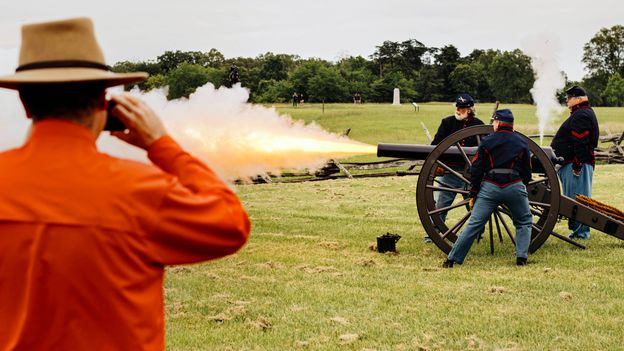
 Jason Andrew
Jason Andrew
The US state of Virginia saw some 50% of the nation's Civil War casualties. Now, mass construction of AI data centres is encroaching on historic lands, the environment and local communities.
As the gunner of the Bull Run Legion lifts the explosive charge from its container and carries it up to the cannon, dozens of phones are lifted from pockets. Visitors open camera apps and raise devices high, focusing in on the handful of blue-uniformed men as they swab the gun's barrel with an era-appropriate sponge fastened to a stick.
The cannon blasts its shot out into the air, and in the same moment, each phone fires its parcel of data at the cloud, landing in a data centre where banks of diligent servers sort, clean and route it along.
On 21 July 1861, Union soldiers defending the United States watched over the crest of the same hills now framed on tourists' smartphones, as rebelling Confederate forces charged out of the forest in the first major battle of the American Civil War. A century and a half later, the Bull Run Legion, a group of "living historians" (better-known as re-enactors), still gather at Manassas National Battlefield Park using historic techniques and uniforms to commemorate that struggle.
But today, the march of technology has turned this historic landmark into the scene of a new kind of battle.

 Jason Andrew
Jason Andrew
The concerns aren't just practical, however – some fear building data centres too close to national landmarks could erase history and bury the lessons the Civil War has for future generations. "Do I want to see a data centre on the view line of this park? No, I do not. But do I recognise, since I worked in IT, that they're necessary? Yeah, I can get that. So there is no easy answer," Bart Wheeler, one of the living historians who works the cannon, tells the BBC. "Any interested citizen has to be worried."
Those building the data centres disagree with these concerns and say they are taking steps to ensure the development is respectful of the historical context, even planning new information kiosks and trails around the site.
Now, around 150 years after the Union army fought to protect this land in the 19th Century, a coalition of community advocates, environmentalists and history buffs are waging a differenty kind of war against an industry they say is steamrolling past their interests. It's a conflict with global repercussions.
The infrastructure which makes the internet work often lives in massive windowless buildings ringed by high black fences. Inside, stacked banks of computer servers receive signals and crunch numbers from devices around the world, providing the technical horsepower that allows for viral videos, cheeky text messages and more recently, untold numbers of AI queries.
Data centres process our most intimate thoughts and transactions, but they're seldom seen by most users – that is, unless they're your neighbour. Around the world, the sprawling footprint of data centre development and their demands on resources have made this aspect of our digital lives more visible and controversial, particularly as the AI era sparks meteoric growth.
"Customer demand remains very strong, driven by the digitalisation of the economy and AI revolution," says Karen Cohen, a spokesperson for QTS Data Centers, one of two companies seeking to build the massive Prince William Digital Gateway data centre development at Manassas. According to the American Battlefield Trust, the 37-building complex is the largest planned data centre development on earth the world.

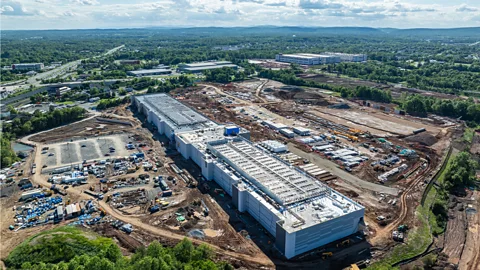 Hugh Kenny/ The Piedmont Environmental Council
Hugh Kenny/ The Piedmont Environmental Council
Northern Virginia was a cradle for the tech industry and continues to be a major nerve centre. Its proximity to Washington, DC and the defence industry, alongside generous tax breaks and access to a skilled workforce, helped the industry plant roots in an area sometimes dubbed "data centre alley". Several of the re-enactors of the Bull Run Legion tell the BBC they have careers in IT themselves, attending battle reenactments on the weekends.

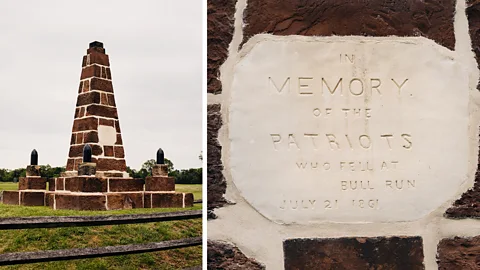 Jason Andrew
Jason Andrew
The Prince William Digital Gateway, planned to occupy land where soldiers clashed during the Battle of Second Manassas, will have a footprint of over 23 million sq ft (2.1 sq km). Aaron Ruby, a spokesperson for Virginia's electric utility Dominion Power, tells the BBC that Dominion expects the energy demand of the state's data centre industry will quadruple over the next ten years – contributing to the doubling of the entire state's demand.
But as the industry's footprint continues to grow, so too has local backlash.
A report by the state legislature says building the infrastructure to provide the necessary energy for the data centre boom "will be very difficult to achieve". The report adds that if the state intends to meet its clean energy goals and reduce the use of fossil fuels, it will be even harder to power the planned data centres. It also says that without guidelines in place, massive construction costs to build new power generation and lines could lead to higher electricity prices for regular consumers.
QTS, however, says that it will pay any costs related to upgrading the electricity grid to ensure no impact to residential rates. But that's unrealistic, according to Ann Bennett, data centre issues chair of the Virginia chapter of the Sierra Club. "This very reputable audit wing of the government says 'we have a big problem'," Bennet tells the BBC, describing the legislature's report. "We're subsidising these major companies with our energy, but also with our tax dollars."

 Jason Andrew
Jason Andrew
Ruby of Dominion Power, though, says that "data centres currently pay the full cost of their power". In order to "make sure that remains the case going forward", he says the state report recommended consumer protections, and Dominion is working to get these protections approved.
Bennett says this won’t be enough. "It's almost too late," she says. "In some ways, this is becoming a mitigation project already." The data centre industry is entrenched in Virginia, and further development seems like an unstoppable force. But the Sierra Club hopes other jurisdictions can learn from Virginia's experience and strike the right balance.
"We are not anti-development," says David Duncan, a native Virginian and president of the American Battlefield Trust. His organisation, along with a group of others, is suing to stop the construction of the Prince William Digital Gateway. "We believe this should be an and conversation," Duncan tells the BBC. "That's what has been lost in this rush to build these types of facilities too close to our historic resources."

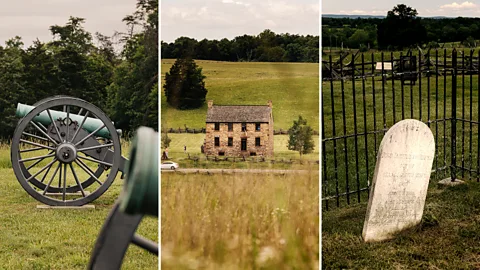 Jason Andrew
Jason Andrew
Cohen says the data centre development won't interrupt the historical value of the area and QTS plans to create "miles of multi-purpose trails" and install "historical landmarks, interactive kiosks and other tools in areas of historical importance" on the battlefield site.
But for some, the issue isn't a lack of signage. "Nobody wants to look into the forest and see these massive monoliths rising," Jim Matte, another member of the Bull Run Legion, tells the BBC.
The Digital Gateway's approval was finalised in a controversial marathon 27 hour town hall meeting in December 2023, after a 4-3 vote in a lame duck session by some legislators who had already lost their seats in the previous election. "We're in litigation because they took shortcuts in the approval processes", says Duncan, adding that activists and citizens alike believe developers and lawmakers anticipated public backlash, but chose to go ahead with the approval anyway. (QTS did not respond to questions on this issue.)
The Battlefield Trust has worked with – and litigated against – powerful developers in the past. Years ago, the organisation successfully altered a plan to build a Walmart at The Wilderness, another pivotal battlefield in Virginia, by moving the site three miles (4.8km) down the road. "When we clamp down on your ankle and don't let go, you're going to get sick of us. We're not just gonna roll over," Duncan says.

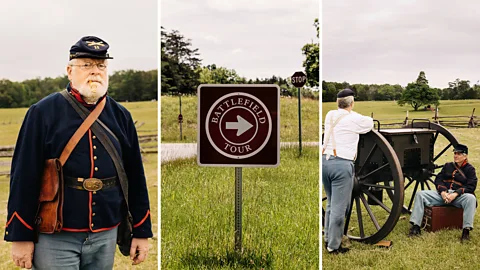 Jason Andrew
Jason Andrew
But he also feels the data centre industry has more money and momentum behind it than Walmart. "There's so much power," Duncan says.
The Civil War and technological transformation
The idea of a data centre would be lost on the soldiers of the American Civil War, but they would be no strangers to technological upheaval.
During the Civil War, freshly-strung telegraph lines knit marching armies together. The new technology of photography carried images of battle's toll to homes across the world. Advancements in munitions and firearms increased the deadliness of combat, locking the North and South in trench warfare stalemate through the war's final months. It ultimately gave the North – with its industrialised economy – the advantage.

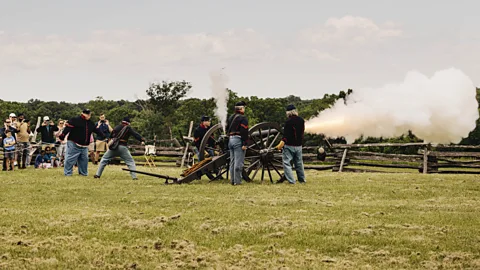 Jason Andrew
Jason Andrew
Manassas stood near the crossroads of two railroads, a technology only a few decades old at that point. Manoeuvres throughout the war revolved around access to rail supply lines, with armies seeking to cut off or secure important junctions. The conflict itself was precipitated by the nation's railroad-fuelled westward expansion, which brought the question of extending slavery to new territories or abolishing it to a head.
Today, as Americans face another redefinition of their country in an era of big tech and political division, for many the historic battlefields remain an important resource.
"These places are crucial for the future of our country," says Duncan. "This country was defined on the battlefields of the American Civil War."
For timely, trusted tech news from global correspondents to your inbox, sign up to the Tech Decoded newsletter, while The Essential List delivers a handpicked selection of features and insights twice a week.

